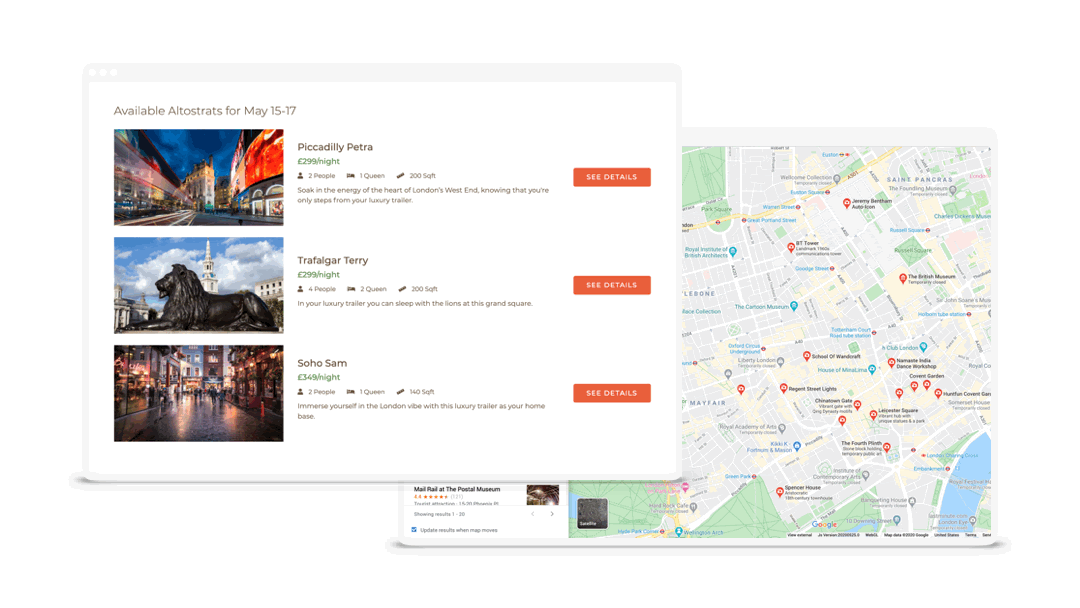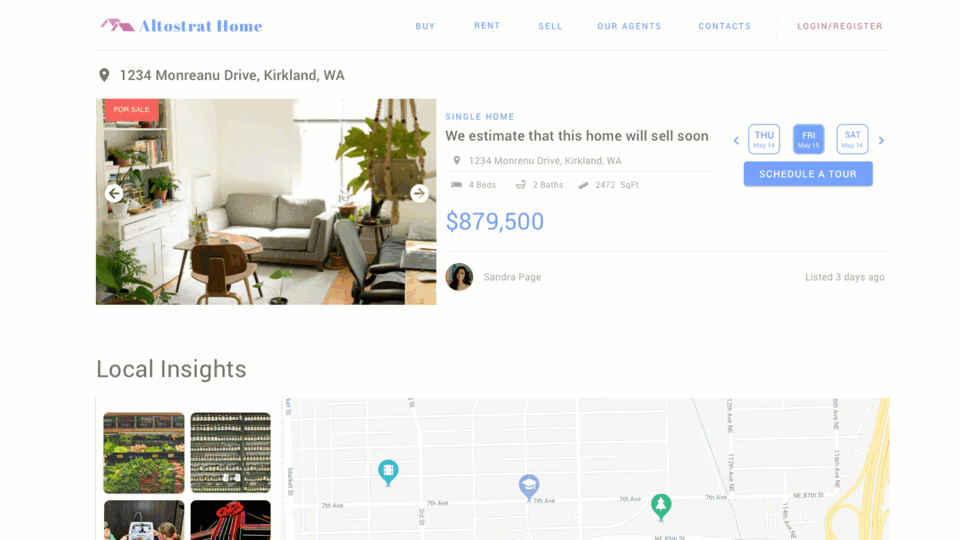Local info helps people make decisions on where to visit and stay, where to shop and explore, which houses to tour, and more. For example, to evaluate whether a home is in a desirable neighborhood, home buyers often switch back and forth between multiple windows–a real estate site on one window and Google Maps on another. And they repeat this process for each home they’re interested in. This can be frustrating for users and can negatively impact conversion. The new Local Context beta helps bridge that gap by quickly and easily embedding the familiar Google Maps experience into your desktop or mobile web app to provide a smoother user experience, help users make quicker decisions, minimize site abandonment, and improve conversions.

Integrating local info into your site helps your users make quick, confident decisions.
Provide the familiar Google Maps local experience directly on your site
With Local Context, you can provide your users with Google’s rich, local information for about 200 million places worldwide, and the experience used by over 1 billion global users every month. It helps you keep users engaged on your site by giving them a detailed understanding of places near a specific location they’re considering–place names, descriptions, price level, ratings, reviews, and photos. It even provides estimated time of arrival and walking directions from the location of interest. Users can view this rich info on nearby places by clicking on a marker near your location or on a place photo in the Place Chooser.

Users can view info on nearby places by clicking on a marker or a place photo in the Place Chooser.
A simple, comprehensive local experience
Local Context brings together the best of Maps, Routes and Places into a single experience that’s easy to implement and use. It can be added to your existing map, while keeping styling and other Maps functionality intact. You can integrate the full experience into your site in a matter of days with just a few lines of code.
Original map code without Local Context:
const myCoordinates = {lat: -41.2847, lng: 174.7681};
const map = new google.maps.Map(
document.querySelector('#map-container'),
center: myCoordinates,
zoom: 16
);Local Context map code:
const myCoordinates = {lat: -41.2847, lng: 174.7681};
const lcMapView = new google.maps.localContext.LocalContextMapView({
element: document.querySelector('#map-container'),
placeTypePreferences: [
'bakery', 'cafe', 'clothing_store', 'drugstore', 'park',
'restaurant', 'shopping_mall', 'tourist_attraction', 'university'
],
maxPlaceCount: 24,
});
const map = lcMapView.map;
map.setOptions({
center: myCoordinates,
zoom: 16
});In addition, you can keep your implementation up-to-date with virtually no development or maintenance costs. We do the place update and curation work in the background so you don't have to. Priced per session for more predictable costs, it offers integrated user interaction with our rich Places data, with no extra API calls.
**Customize to fit your business needs and brand**
Local Context enables you to tailor your user experience by selecting only the place types you want your users to see around your locations. You can also limit how many total places you want shown on your map to facilitate quick user decisions. For example, a hotel website can choose to show a total of 12 places around their properties and limit those places to only restaurants, tourist attractions, nightlife, and shopping. You can also change the look and feel of your map to align with your site’s style and brand–from the color of markers and icons to the position of key UI elements.
You can customize your user experience to fit your business needs and brand.
Try Local Context in beta for free
Local Context is available as a library for the Maps JavaScript API at no cost during the beta period. Take a look at our documentation to get started. And stay tuned for the extension of Local Context beta into native Android and iOS apps to address mobile on-the-go use cases and experiences.
Visit us here to learn more about our latest announcements and look back at 15 years of collaboration with Google Maps Platform.